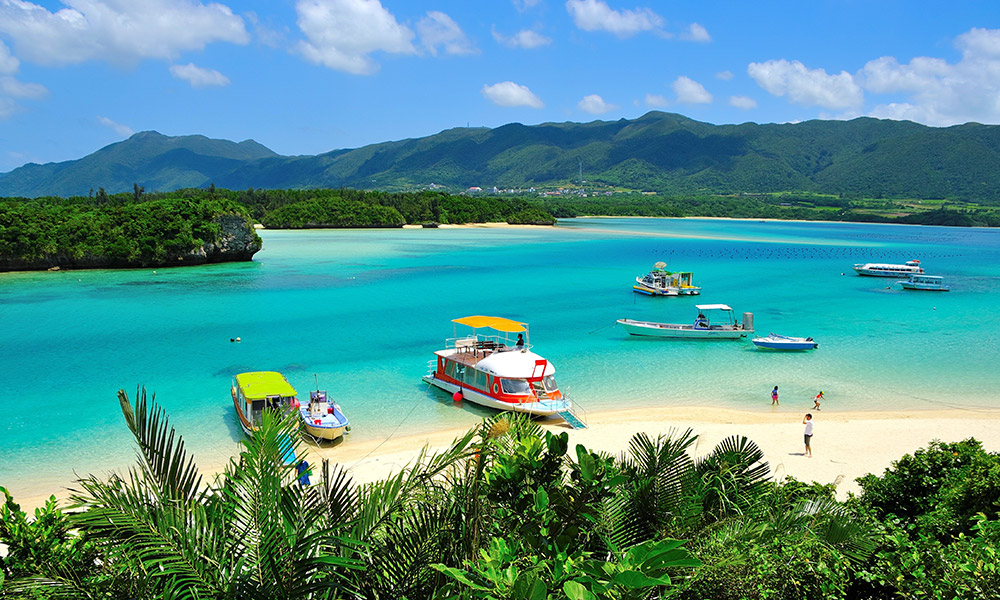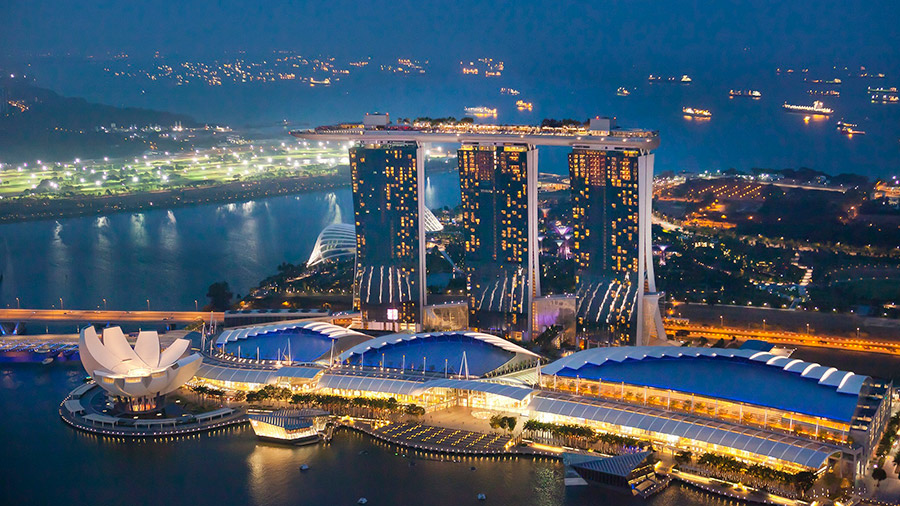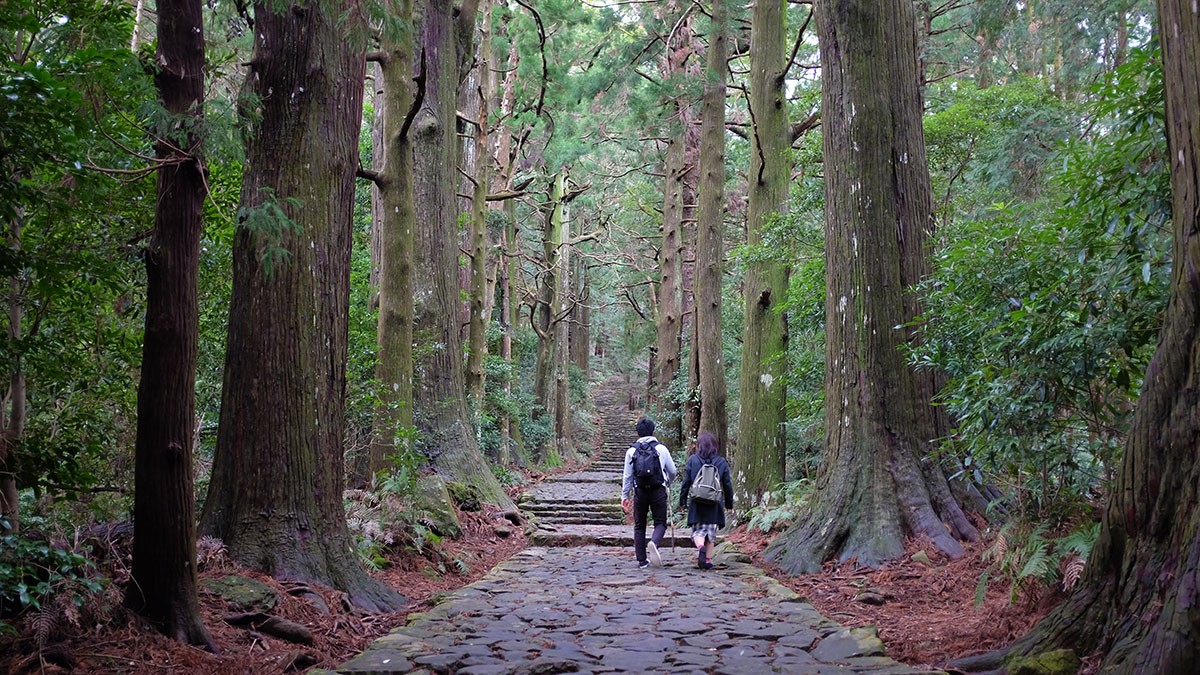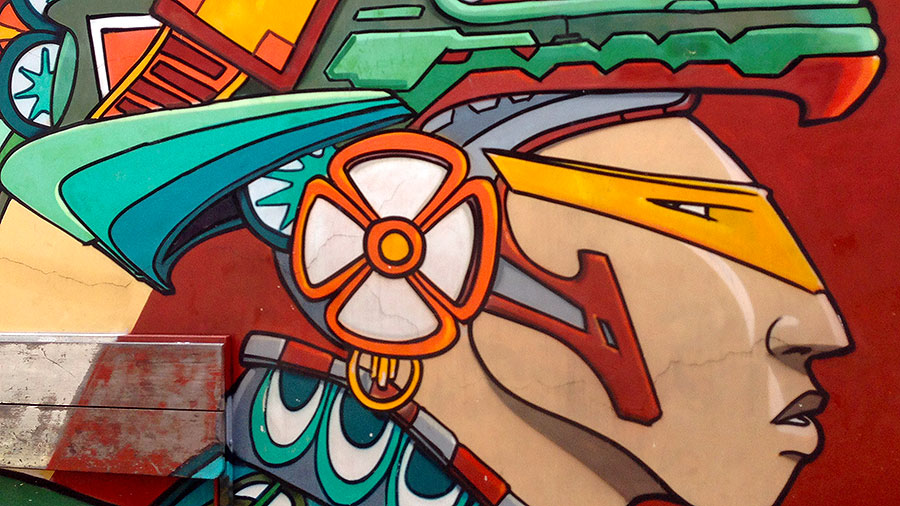Japan is renowned for its majestic volcanic landscape and bubbling hot springs, thick forests, dazzling neon cities and villages that feel frozen in time. But did you know it also has lush subtropical islands? Less than three hours flight from Tokyo, the Ryukyu chain is a secluded paradise of 160 islands large and small. Okinawa is its most well known.
I first visited Okinawa back in 2013. At the time, all I knew about it was that it was the home of Mr Miyagi from The Karate Kid. So, not a lot. What I found was an island abundant in natural beauty, with its own distinct culture, remarkable food, and people who only too willing to reveal their stories to anyone who would listen. I was entranced.
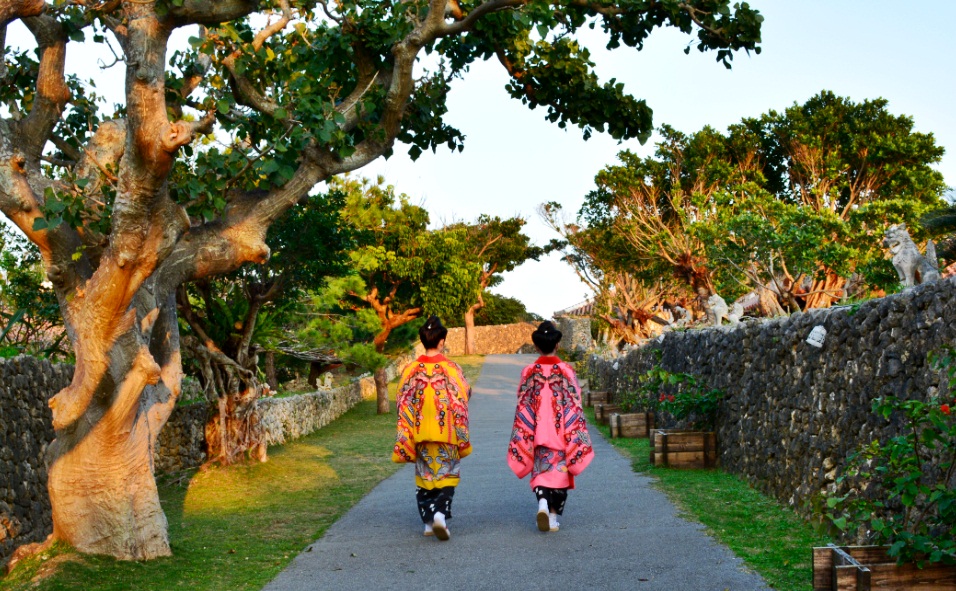
Though it’s been a while since I walked its rocky shores, explored its colourful streets and feasted on the deliciousness of soki soba (more about that later), it’s never been far from my mind. The people, the history, and the food – it’s an entirely different side of Japan.
If you’re considering a trip to Okinawa in the (hopefully) not too distance future, here are four reasons you absolutely should.
1. The distinct culture
Long before it was part of Japan, the Ryukyu Islands was a nation all of its own. Its myths, its religion and even its language were different, incorporating elements of Japanese, Chinese, Korean and other south east Asian cultures.
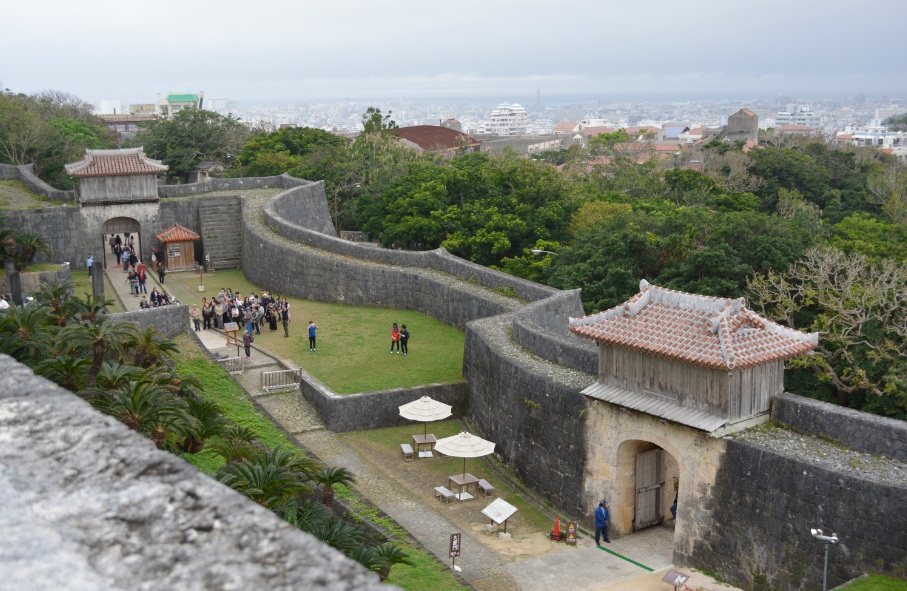
This unique culture can be seen throughout the islands, from its architecture and high stone walls to the ‘shisa dog’ statues that are often placed on rooftops and at the entranceways to houses to ward off evil spirits.

The UNESCO World Heritage listed Shuri Castle, Okinawa Prefectural Museum and the Murasaki Mura Cultural Park (a bit like a theme park/reproduction of a 14th century village from the Ryukyu Kingdom) are all worth a visit.
2. The people
Above all, it was the people of Okinawa that left the biggest impression. I had a translator travelling with me, so was able to engage with the locals a lot more than I would have. There were so many people, so many stories, but it was conversations with the elderly residents of Ogimi Village in the north that have stayed with me all this time.
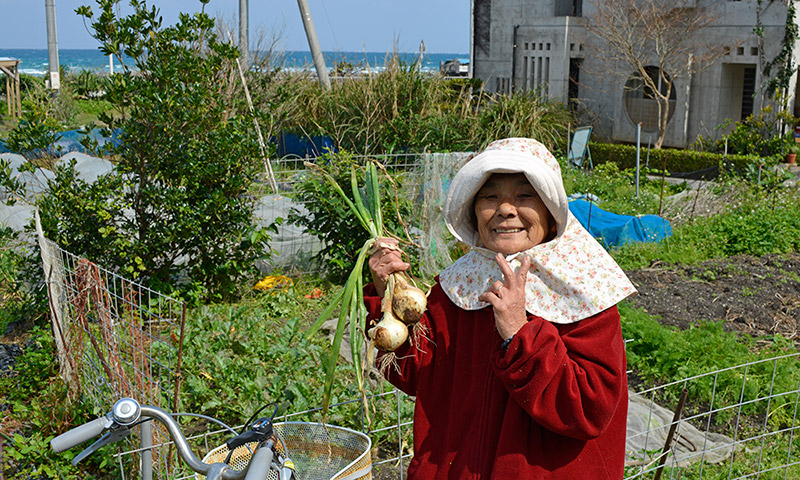
In a nutshell, they’re known for having one of the world’s highest life expectancies. Quizzing them why this was, there was obvious healthy eating involved, but the real reason was that they kept their minds engaged, they were still active and engaged members of the community. Bashofu Textiles, who produce textiles, clothing and other products from banana leaves, employed many of these local people.
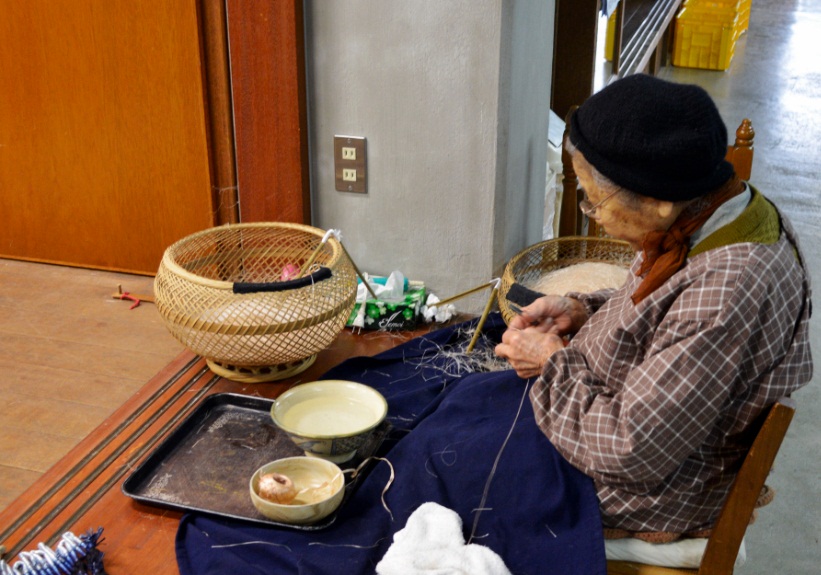
One 84-year-old woman (at the time) I met nearby was tending her garden like someone half her age. She said that if she didn’t tend to it, to provide the vegetables to her family, who else would? It gave her a sense of purpose, a reason to get up and move each day.
An active body is the key to a healthy mind, and it’s never too late to start.
3. The local alcohol
Everyone is familiar with Japanese sake. It’s the most iconic Japanese alcoholic beverage, a rice wine brewed and enjoyed since at the 3rd century. Okinawa has its own version, known as awamori. However, unlike sake, awamori is distilled not brewed. This makes for a sweet aroma and higher alcohol content. It’s traditionally aged in clay pots.
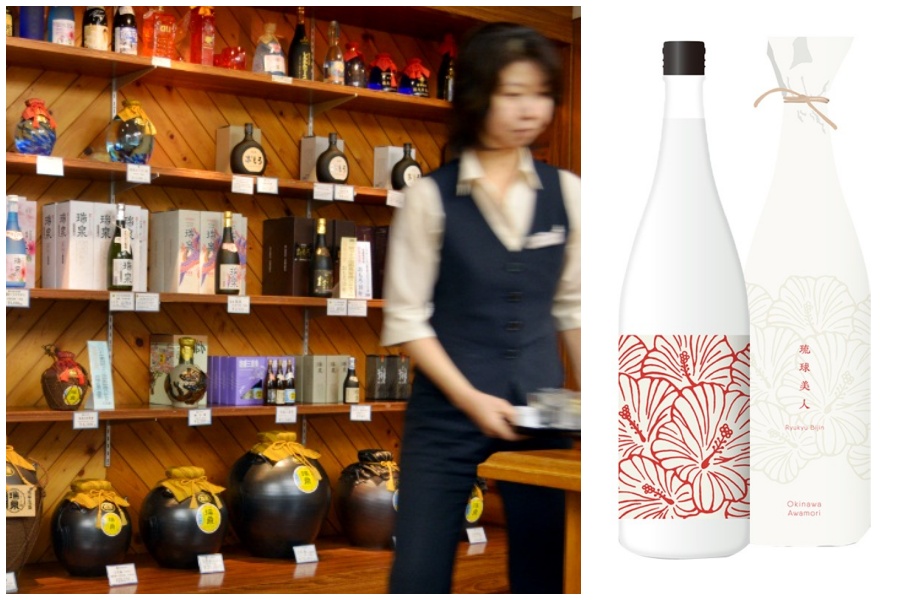
Awamori is a versatile spirit which can be sipped straight, used in cocktails and even infused with chili as a tasty condiment. I ran out of my stash years ago and thought I’d have to make a run back to Okinawa to resupply, but recently discovered a bottle of Ryukyu Bijin awamori for sale at Dan Murphy’s! Made in Okinawa by Helios, it took me right back to the islands with just one sip. They apparently have a Sparkling Yuzu version coming out soon as well (something to file away for future). There are around 50 awamori distilleries in Okinawa, so you’ll still need to visit and try some others too!
4. The food
I love Okinawan food. I dedicated a whole post to it here. It feels like I ate constantly, wanting to try as many the dishes and ingredients as I could in my limited time on the island. Some of the most delicious dishes were goya champuru, which is a stir fry made with a bitter melon known locally as goya; horse sashimi, which was surprisingly delicious with a venison-like flavour; and soki soba, a flavoursome noodle dish with pork ribs.
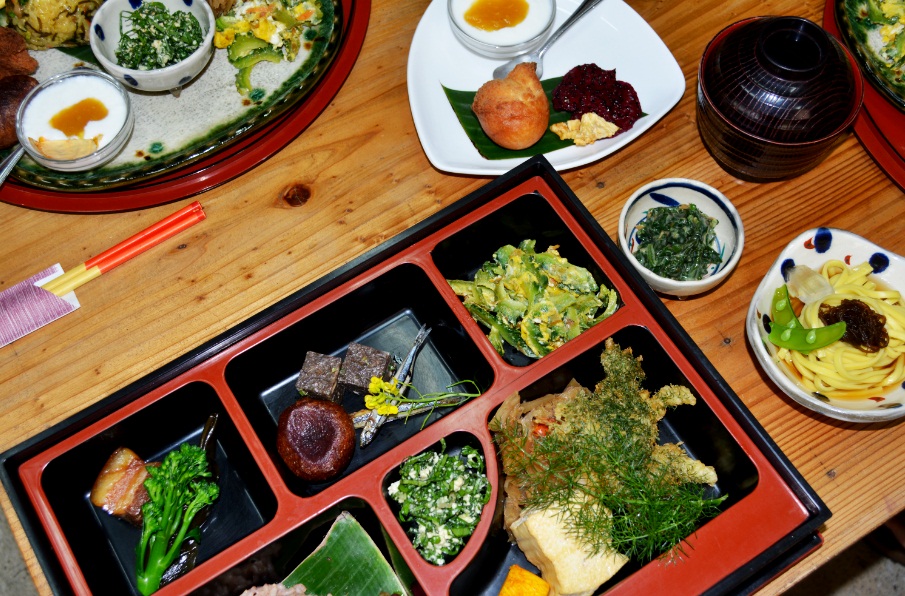
Trust me, your first visit to Okinawa will not be your last.


